- Home
- About us
- Nepal
- Tibet
- Bhutan
- Nepal Tour Packages
- Kathmandu Tour
- Nepal Tour 5 day
- Chitwan Pokhara Tour 8 day
- All Nepal Tour 12 day
- Nepal Driving Tour 12 day
- Family Tour in Nepal
- Nepal Tour Special 14 day
- Heritage Tour 14 day
- Art & Craft Tour
- Birding Tour in Nepal
- Lumbini Tour
- Honeymoon in Nepal
- Mustang Jeep Tour
- Tiji Festival Tour
- Wildlife safari Tour
- Hindu pilgrimage tour
- Buddhist Pilgrimage Tour
- Yoga Meditation Tour
- Volunteer Nepal
- Nepal Treks
- Tibet Tour Package
- Bhutan Tour Package
- Travel Tips
- Gallery
- Contact
- Blog
- XML
Highlights of Mustang Tour
The hidden kingdom of Mustang is the last vestige of medieval Tibet that fascinates everyone. The almost rectangular piece of land surrounded by Tibet on three sides has access from the Nepalese Himalaya on one side. Being in the corridor of the trans-Himalayan trading route, Mustang had the best art and culture of the medieval Indian subcontinent and the Tibetan plateau. While Tibet was ravaged by the Cultural Revolution, Mustang remained forbidden until 1992, as it was politically in Nepal.
There is a lot to experience and things to do in Mustang. But the highlights listed in this article are what make Mustang in the book, ‘1000 Places to visit before you die.’
Drive through the Kali Gandaki valley
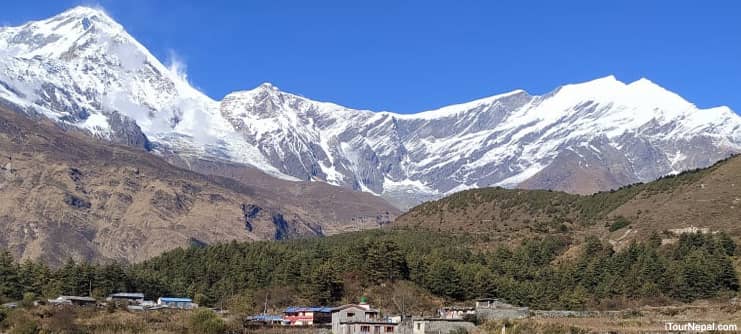
The Kali Gandaki River has cut through the Himalayas deep, making it the second deepest gorge in the world. Wedged between Annapurna and Dhaulagiri, a drive through the Kali Gandaki valley is a panoramic thrill. The scenery changes from lush green sub-tropics to alpine and the arid trans-Himalayan region within a day. Easy side hikes will unravel pristine lakes, waterfalls, and views of icefalls.
Enchanting lower Mustang

Don't just drive past the lower Mustang. At the base of the Nilgiri Himal, Lower Mustang has a lot to offer. Pristine lakes, up close view of the Himalayas, the earliest Bon and Buddhist monasteries, apple orchards and the rich Thakali culture make lower Mustang a favoured land.
Thakalis were involved in trans-Himalayan trade and hospitality service for over 1,000 years. With the arrival of trekkers, they converted their wonderfully clean homes into lodges. They are now known as the most gracious and successful innkeepers in Nepal.
Thakalis migrated from the Tibetan plateau before Buddhism went there. For that reason, the Lower Mustang has a significant number of pre-Buddhist Bon followers and their monastery intact. There are also Nyingma Buddhist monasteries and temples older than those of Tibet.
Mustang caves - the sky caves of Nepal
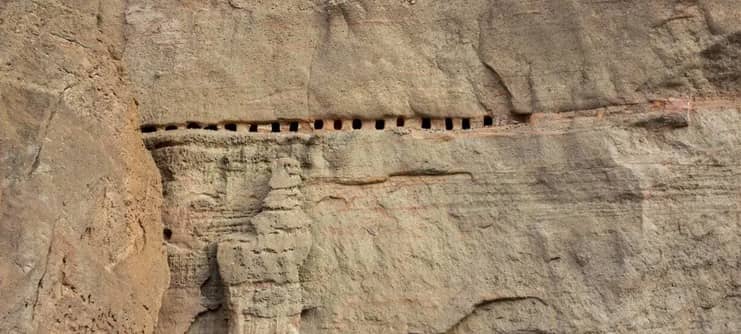
About 10,000 man-made caves known as Mustang caves, also known as the sky caves of Nepal, are still an archaeological mystery. The complex group of interconnected caves is perched high up on the cliffs cleaved by the Kali Gandaki River. Recent excavations have found human remains dating back 3000 years in some caves. The other caves have frescoes and religious objects from around the 12th century. Some of them were also used as residences during the invasion or winter. Most of the cave complexes are at least 155 ft above the ground and are inaccessible.
Oldest form of Tibetan religions

It is believed that the Guru Rinpoche (Padmasambhava) was in the Mustang valley before he went to Tibet. The presence of monasteries and artifacts older than the Samye monastery (the first monastery of Tibet) proves that Mustang is the land with ancient practices from Tibet. The 8th-century Lo Ghyakar Gompa, Ranchung Chungsi cave, and the Chhairo Gompa (Tashi Shagagh Jyochen Chhoyokhor monastery) are the oldest Nyingma monasteries in Mustang. Besides that, there is also a Bon monastery at Thini and Lubra villages dating back to at least the 12th century. In the citadel of the Himalayas, Mustang nourished the earliest religious practices of Tibet unchanged with time.
Lo Manthang, the land of aspiration
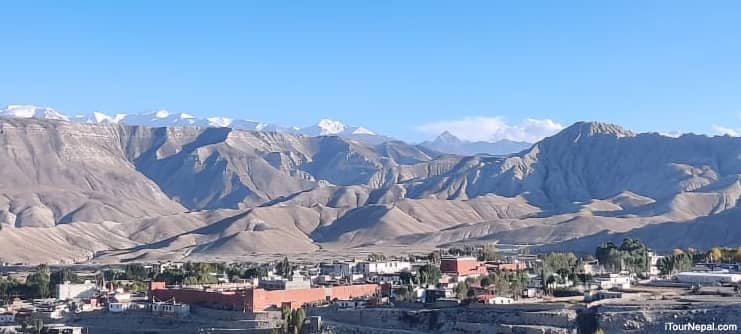
Hidden in the citadel of mountains, the earthen-walled capital of Mustang is the best-preserved medieval city in the world. Lomanthang was known as the 'southern land of aspiration' in medieval Tibet. The only existing Himalayan settlement with a fortification wall made out of rammed earth is listed in a tentative UNESCO heritage site. The 8 m tall wall with 1.5 m width at the base shelters the palace, three monasteries, and about 180 residential houses. There are several rows of Mane walls and Chhortens within the settlement and along the circumambulatory path directly outside the wall. The city is at least 500 years old, which changed very little with time.
A trip to Lo Manthang has changed since the access to the road. The road goes to the Kora La border with Tibet, which is now a port for trade and also an attraction for local tourists. Visit our blog about a road trip to Upper Mustang to know more about road conditions and how to visit the pristine side of Upper Mustang.
Spend time with nomads of Mustang
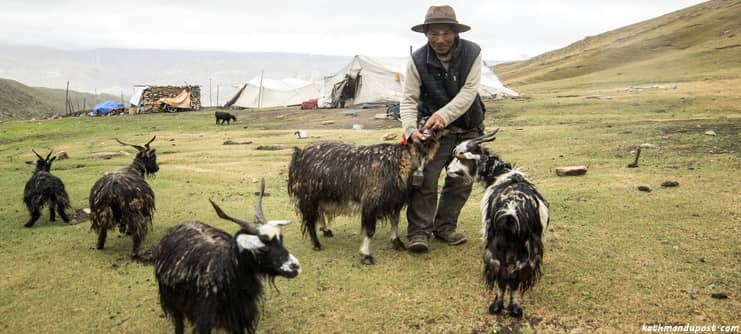
There are a few of the last nomadic yak herders living in the plateaus of Mustang. Before the 1950's when borders didn't divide locals, they used to roam around freely into Tibet and back to the lowland of Mustang. However, the grazings are limited for those nomads left on the Nepal side after the Cultural Revolution. Accordingly, many of them left the nomadic life and moved to the cities. Having no permanent address, they are neither Tibetan nor Nepalese.
The yaks give them everything they need, from food to shelter and clothes. Raring Yaks is hard as they have to work from dawn to dusk herding them, collecting dung which is used as fuel, milking and shearing and moving to the proper grazing with season at the altitude above 4,000 m.
The Ban imposed by the Chinese from buying Nepalese Yaks and the snow blizzard jeopardized their livelihood in recent years.
A visit to a nomad camp is also the best way of enjoying the landscape of Mustang and experiencing a less touristy part of it.
Experience the culture and landscape of Mustang kingdom without paying pricy permits.
Amchi of Lo Manthang

With the presence of rare herbs and the Buddhist philosophy of healing, the Himalayan region also had a complex system of healing practices. The Himalayan healers known as Amchis were trained by the monasteries for the remote villages. The Amchi tradition provided the much-needed healthcare to the Himalayan region for over two millennia.
Mustang, being the most intact Tibetan bastion, also had well-established Amchi traditions. The younger generation of the Amchi family from Lo Manthang has started the Lo-Kunphen Mentsee Khang school, which is the only government-recognized Tibetan medicine institute.
The school provides much-needed education to poor kids, keeping the Amchi tradition alive. Since there are not many people who can translate the sophisticated scriptures, all kids get a standard Nepalese education until the age of 14. Then, after the kids get the options of a vocational training course in Amchi medicine.
Luri Gompa

Luri Gompa is a cave monastery with a 6-foot-tall Chorten and sophisticated murals dating back to the 14th century. Upper Mustang is dotted with cliffside caves, and Luri Gomba makes one such cave its sanctum, perched vertiginously about 100 m above the ground. It has two chambers, of which the outer chamber is a praying hall with artwork of later ages, and the inner chamber is where the Luri Kabum is (Kabum - A collection of teachings associated with a specific deity or lineage).
The enlarged and smoothed inner section of the cave has a Chorten of Complete Victory (Namgyal Chorten) with painted figures on all sides. The domed ceiling is decorated with eight painted images of Mahasiddhas, circling an Akshobhya mandala. The Kashmiri (Indian) influence found in the images of Luri makes them older than the paintings found in Jampa and Thubchen monasteries, which have a fully developed Tibetan style.
Tiji Festival
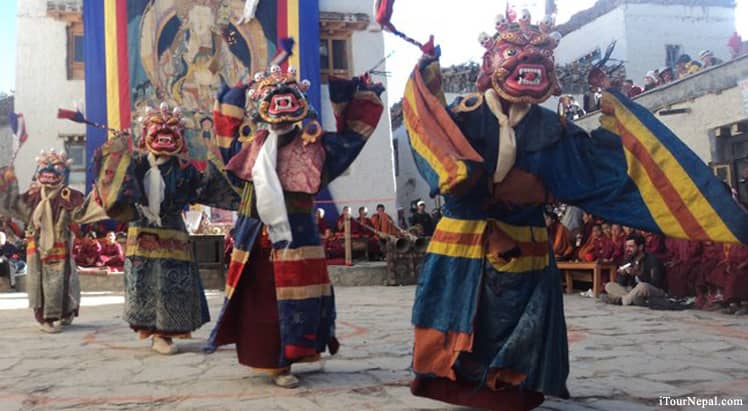 The mask dancing festival of Tiji, celebrated in Upper Mustang, is the most authentic ceremony in the present-day Tibetan world. Many such ceremonies have been stopped because of the Cultural Revolution. The festival is based on the meditative dance of Vajrakilaya with meaningful gestures and movements to empower his blessings and ward off negativity. In the three-day-long festival, monks commemorate the story of Dorje Jono (Buddha), who must battle against his demon father to save the Kingdom of Mustang.
The mask dancing festival of Tiji, celebrated in Upper Mustang, is the most authentic ceremony in the present-day Tibetan world. Many such ceremonies have been stopped because of the Cultural Revolution. The festival is based on the meditative dance of Vajrakilaya with meaningful gestures and movements to empower his blessings and ward off negativity. In the three-day-long festival, monks commemorate the story of Dorje Jono (Buddha), who must battle against his demon father to save the Kingdom of Mustang.
Best hotel in the world by

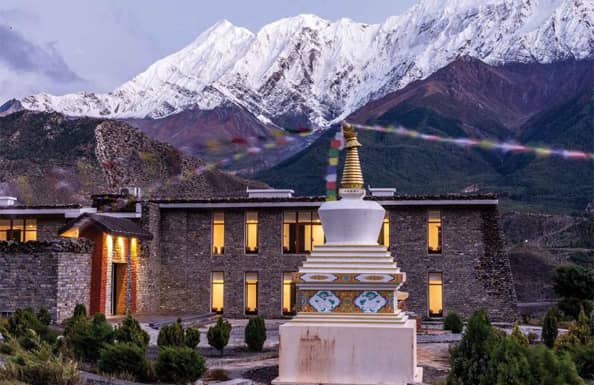
- Support local company.
- Expertise over 20 years.
- Cost effective Treks.
- Cultural immersion experience.
- High quality services.
- Eco friendly & sustainable practices.
Mustang Tour Review
Outstanding Mustang Trip
.. And the 2d trip was to Tiji festival in Upper Mustang with our guide Indra. The best places to visit, the best views and care about everything. We highly recommend this company and these guides and we are defenetly planning more trips with them next year.Best tour in 2025/2026
Enjoy the untouched culture and heritage of the two Himalayan countries in Spring when the blossoms make it extra picturesque with the moderate temperature and crisp sky and festivity, March, April and May are the best times to do Nepal Bhutan Tour.
Everest Luxury lodge trek
May is best time for Everest trek as the trekking starts with flight to Lukla at 2,800 m. May temperature for Everest trek is comfortable and the sky remains clear. Everest trek could be organized from 5 days to 12 based on luxury lodges and decent lodges.
Everest cultural trek > Starting USD 1,480
Mid June - August end is best time for Nepal Tibet tour. Monsoon is peak season for Mt Kailash tour in western Tibet. Trek to trans-Himalayan region of Mustang or visit the Buddhist sites during monsoon.
Nepal trips for monsoon
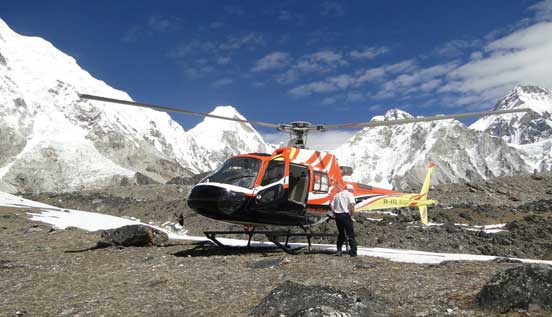
Best Way to see Mt Everest
Experiencing Everest could be a pleasant long lasting memory.- Nepal Trips for Winter
- A guide to explore Nepal, Tibet and Bhutan.
- Things to do in Lower Mustang
- Nepal Travel Tips for seniors
- 5 cultural immersion tour of Kathmandu
- 5 Most popular Tour of Nepal
- Best family holiday activities in Nepal
- Best way to see Mt Everest
- 5 easy treks in Nepal
- Short Trek from Pokhara
- Shortest Trek to Annapurna Base Camp
- Highlights of Mustang Tour
- Nepal, the best spiritual destination in the world
- All about Muktinath Tour
- 4 sightseeing around Lumbini
- Most popular Buddhist sites of Nepal
- Buddhist sites around Kathmandu




